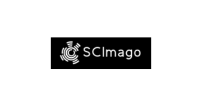VITRIFICATION OF BOVINE IVP EMBRYOS: AGE OF EMBRYOS AND EXPOSURE TIME TO CRYOPROTECTANT INFLUENCE VIABILITY
DOI:
https://doi.org/10.5380/avs.v9i2.4073Keywords:
Embriões PIV, vitrificação, OPS, criopreservação, IVP embryos, vitrification, cryopreservation.Abstract
Avaliou-se diferentes tempos de exposição e concentrações de crioprotetores na vitrificação de embriões bovinos PIV. No primeiro experimento, foram utilizados blastocistos do dia 7 (Bx-D7). No tratamento 1 (T1), 82 embriões foram expostos por 1 min. à solução de equilíbrio (SE1 = 10% EG + 10% dimetilsulfóxido (DMSO), seguido da exposição por 20 segundos à solução de vitrificação (SV1 = 20% EG + 20% DMSO). No Tratamento 2 (T2) 84 embriões foram expostos por 3 minutos à SE2 (8,25% EG + 8,25% DMSO), seguido de 45 segundos na SV2 (16,5% EG + 16,5% DMSO). No segundo experimento adotou-se os mesmos procedimentos do primeiro, porém com Bx D8. A remoção dos crioprotetores foi executado em duas etapas de cinco minutos, em 0,3 e 0,15M de sacarose. Os embriões foram incubados por 72 horas, avaliando-se as taxas de re-expansão e eclosão (12 e 72 horas, respectivamente). No primeiro experimento, a taxa de re-expansão no T1 (91,6%) foi superior a do T2 (82,0%) (p<0,05), porém as taxas de eclosão de 49,6% no T1 e 54,0% no T2, foram semelhantes (p>0,05). No segundo experimento, as taxas de re-expansão não diferiram entre T1 e T2 (65,8 e 68,7% respectivamente), porém a taxa de eclosão do T1 (51,7%) foi superior a do T2 (33,2%) (p<0,05). Conclui-se que a idade do embrião pode influenciar a viabilidade de embriões vitrificados e que a redução na concentração de crioprotetores com aumento do tempo de exposição possibilita idêntica viabilidade na vitrificação de embriões PIV D7, porém não é eficiente na vitrificação de embriões PIV D8.
Abstract
Different exposure times and cryoprotectant concentrations were evaluated in vitrification of D7 and D8 IVP bovine embryos. In the first experiment, D7 expanded blastocysts (Bx) were used. In Treatment 1 (T1) 82 embryos were exposed for 1 minute to an equilibrium solution (ES1 = 10% EG + 10% DMSO), followed by 20 seconds exposure to vitrification solution (VS1 = 16.5% EG + 16.5% DMSO). In Treatment 2 (T2) 84 embryos were exposed for 3 minutes to ES2 (8.25% EG + 8.25% DMSO), followed by 45 seconds exposure to VS2 (16.5% EG + 16.5% DMSO). Embryos were loaded in OPS with 5µL VS, and plunged into liquid nitrogen. The second experiment used D8 Bx as previously described. Cryoprotectant removal was performed in two steps, in 0.3 and 0.15M sucrose gradients for 5 minutes each. Embryos were then incubated for 72 hours, and re-expansion and hatching rates evaluated at 12 and 72 hours, respectively. In the first experiment, re-expansion rate in T1 (91.6%) was higher (P<0.05) than in T2 (82.0%), while hatching rates (49.6% and 54.0% in T1 and T2, respectively) did not differ (P>0.05). In second experiment, re-expansion rates did not differ between T1 and T2 (65.8% and 68.7%) respectively, while hatching rate in T1 (51.7%) was higher (P<0.05) than in T2 (33.2%). In conclusion, embryo age may influence the viability of blastocysts after vitrification procedure, while reduction on cryoprotectants concentration associated with increase in exposure time did not affect the viability of D7 IVP bovine vitrified embryos. However, it was not efficient for D8 embryos vitrification.
Downloads
How to Cite
Issue
Section
License
Authors that wish to publish in AVS agree with the following conditions:
- To keep copyright of the article and allow the AVS to publish the first time. The article will be licensed by Creative Commons - Atribuição 4.0 Internacional allowing the sharing of their work.
- Authors may distribute their work by other channel of distribution (ex.: local or public repository).
- Authors have the permission to publish their work online, using different channels (similar to above), even before the final editorial process.













